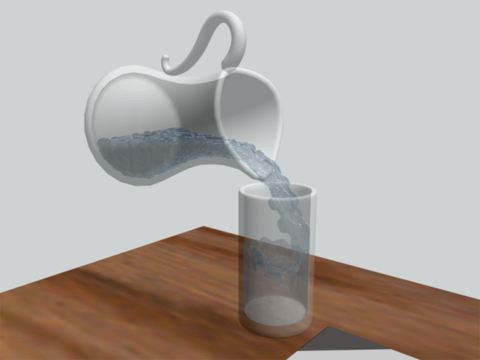
Nucleus dynamics allow users to create particle effects and dynamic simulations that cannot be achieved with Maya classic particles. For example, Liquid Simulation attributes allow you to create particles that behave like liquids, which can interact and drive nCloth animations and deformations. Maya nParticles also includes an improved workflow for setting per particle attributes using ramps, and expands the number of properties and options that can be mapped to per particle attributes.
nParticles is driven by a dynamic simulation framework called Maya® Nucleus™. A Maya Nucleus system is composed of a series of nParticle objects, nCloth objects, passive collision objects, dynamic constraints, and a Maya Nucleus solver. As part of the Maya Nucleus system, the Maya Nucleus solver calculates nParticle simulation, collisions, and constraints in an iterative manner, improving the simulation after each iteration, to produce accurate cloth behavior.
You can use nParticles to create the same particle effects that can be created using Maya classic particles. For most effects and simulations, nParticles and classic particles use the same creation workflows and tools. In addition to Maya classic particle capabilities, nParticles include the following advanced simulation features:
Maya Unlimited provides many predefined nParticle effects. These sample nParticle objects, also referred to as presets, can be used as a starting point in creating your own custom nParticle effects.
This chapter includes these tutorials: